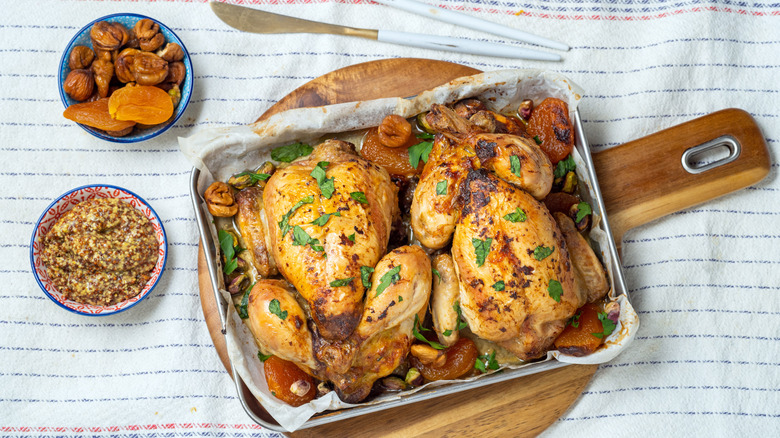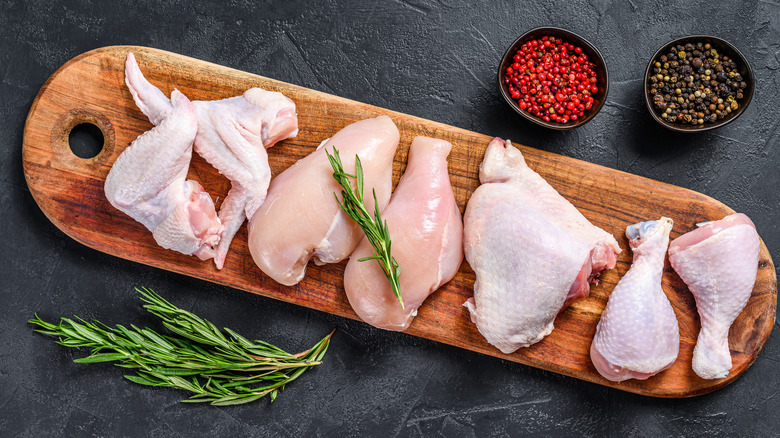Remove Chicken Tendons With 2 Items You Definitely Have Lying Around Your Kitchen
Chicken is often considered one of the least fussy and most cost-effective kinds of meat to prepare at home. Once you're familiar with the best cuts of chicken to buy, it can quickly become second nature to pan sear, oven roast, or air fry your way to a delicious dinner in a matter of minutes. Though some cuts, like chicken breasts, sometimes get a bad rap for being bland or overly dry, there are a number of simple tips that will keep your poultry juicy and tender, no matter how you prefer to cook it. One way to ensure that your meat stays succulent is to remove the tendons, those tough white strings that run through raw chicken. These small rubber-band-like threads are simply pieces of connective tissue that secure the meat and muscle to the bone, and they can be easily removed using two common kitchen items: a paper towel and a fork.
To remove the tendons from a large piece of chicken (such as the breast, tenderloin, or thigh), place the meat flat on a non-slip cutting board. Locate the exposed part of the tendon and slide it in between the tines of a fork. Using one hand to apply pressure to the fork, grab the exposed tendon with a paper towel and pull firmly until it has been completely removed. If you're preparing smaller pieces like drumsticks, you may need to use a paring knife to expose the tendons and slice them away.
How to remove other undesirable parts from raw chicken
While tendons are completely safe to eat when cooked, removing them can make your final dish a bit more pleasant to eat, especially for picky eaters. The same holds true for other edible-yet-undesirable parts of a chicken, including the skin, giblets, and excess fat. The easiest way to remove skin prior to cooking a chicken is by peeling it back from individual pieces. Using a paper towel to prevent slippage, the skin should separate easily from pieces like thighs or breasts with a firm tug. For more stubborn skin, like that around drumsticks or wings, you may need to slide a paring knife between the meat and skin to loosen things up.
When prepping your chicken, you may notice big chunks of yellowish-white fat stuck to the dark meat, especially around the thighs. While some pieces of this fat can easily be picked off of the meat by hand, other pieces will need to be lifted and trimmed away using a sharp knife. Kitchen shears are also a great tool to use here, as they're particularly handy for trimming pockets of fat that are hidden deeper into the meat.
Depending on where you purchased your chicken, you may also notice that organs, like the heart, liver, and gizzards (otherwise known as the giblets), are still inside. These can easily be removed from the chicken's cavity by simply pulling them out and throwing them away — or hold onto them to make a rich giblet gravy.


